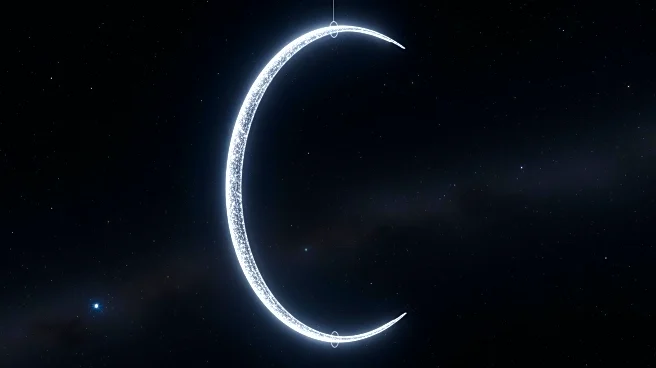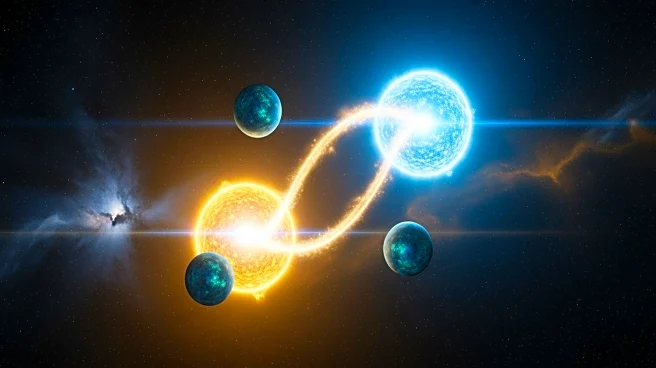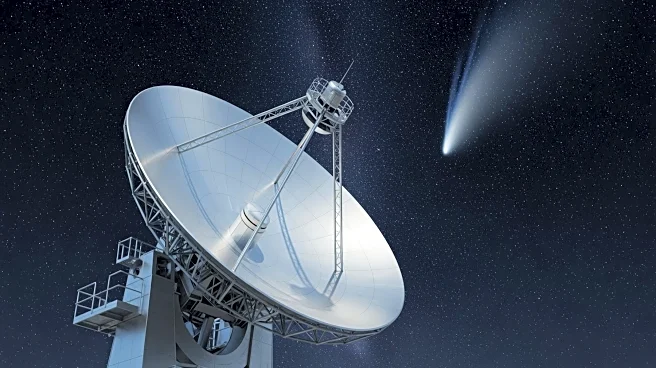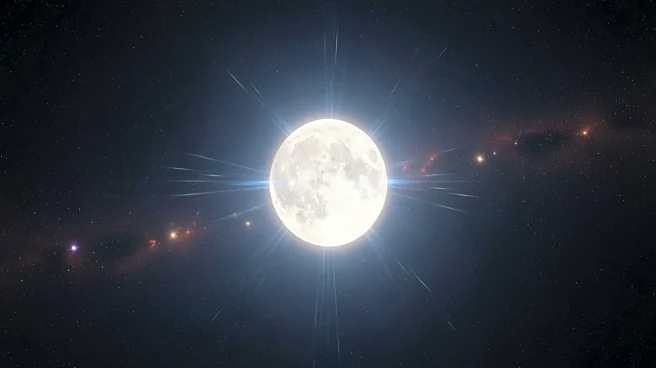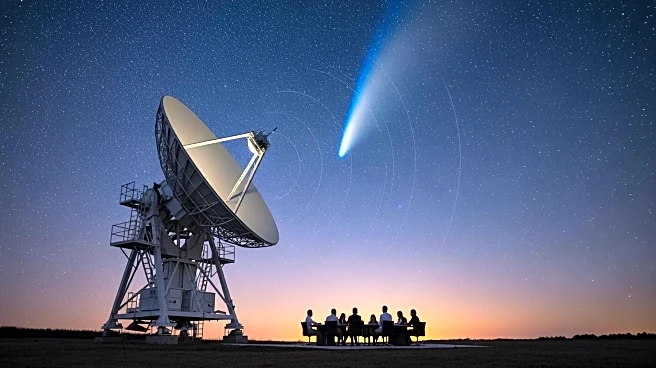What's Happening?
New research from Rice University suggests that Jupiter's rapid early growth dramatically reshaped the solar system. The study, published in Science Advances, indicates that Jupiter's gravitational influence
created rings and gaps in the protoplanetary disk, delaying the formation of planetesimals. These findings help explain why many primitive meteorites formed millions of years after the first solid materials. The research uses hydrodynamic models and simulations to track the evolution of dust and young planets, revealing that Jupiter's growth created conditions for the delayed birth of chondrites, a class of stony meteorites.
Why It's Important?
The study provides new insights into the formation and evolution of the solar system, highlighting the significant role Jupiter played in shaping its architecture. Understanding the dynamics of planet formation and the distribution of materials in the solar system can enhance our knowledge of planetary science and the origins of celestial bodies. The findings also offer explanations for the distinct isotopic signatures found in meteorites, contributing to the broader understanding of solar system history and the processes that govern planetary formation.
What's Next?
Further research will continue to explore the implications of Jupiter's early growth on the solar system's formation. Scientists may use advanced simulations and observations to study the impact of giant planets on their surrounding environments in other star systems. The study's conclusions align with observations of young star systems, suggesting that similar processes may occur elsewhere in the universe. Continued exploration of meteorites and planetary formation will contribute to the ongoing study of solar system dynamics.
Beyond the Headlines
The research also highlights the importance of technological advancements in planetary science. The use of computer simulations and observations from telescopes like ALMA allows scientists to study the complex interactions between planets and their environments. These tools enable researchers to uncover new insights into the formation and evolution of celestial bodies, advancing scientific knowledge and understanding.


